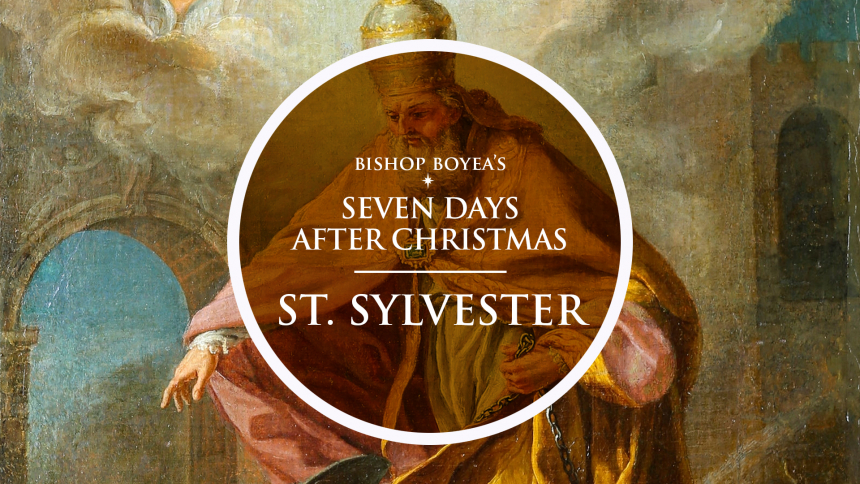
Today is traditionally the Feast of Saint Sylvester, the 4th century pope who governed the Church during the reign of Constantine when Christianity moved from persecution to toleration within the Roman Empire. Bishop Earl Boyea now explains why Saint Sylvester is still relevant to us today:
"The longest reigning pope since the time of St. Peter was Sylvester, twenty-one years (314-335). Near the end of our week of reflections after Christmas what does this man’s life say to us? First of all, we know very little about Sylvester. There are many, many legends, especially concerning his relationship with the Emperor Constantine, who gave peace to the Church in 313. Sylvester was able to enjoy and build upon that peace."
"Imagine, coming off of years of persecution under the Emperor Diocletian where you lived a kind of underground Christianity and then coming into the light. That was Sylvester’s experience. And now that is how our Christianity is to be lived. St. John’s Gospel begins with these words: “In the beginning was the Word…. What came to be through him was life, and this life was the light of the human race; the light shines in the darkness, and the darkness has not overcome it” (John 1:1-5)."
"This Christmas week we have reflected on the life of Christ as a child destined for the cross. His followers are to share in this same kind of life. Nonetheless, we are to shine as light in whatever darkness we may find."
"Pope Sylvester provided a great light to the Roman Christians with the building of several spectacular basilicas. St. John Lateran came to serve as his cathedral and today we consider it the mother Church of all Catholics. He also saw to the building of St. Peter’s which was to last 1200 years, when it was torn down to build the current St. Peter’s Basilica. That must have caused some pains for the historians of the day! Finally, he saw to the building of the Roman Basilica of the Holy Cross in Jerusalem, which according to tradition held relics of Jesus’s suffering and death. Constantine’s mother, St. Helena, brought them back to Rome after her pilgrimage to the Holy Land."
"Sisters and brothers, as we can see, even in being a shining light, there probably will still always be a link to the suffering of Jesus. The basilicas remind us of this. Even as we remember the birth of that Holy Child, we, in the Church, are never far from the cross."
* First broadcast 2021
